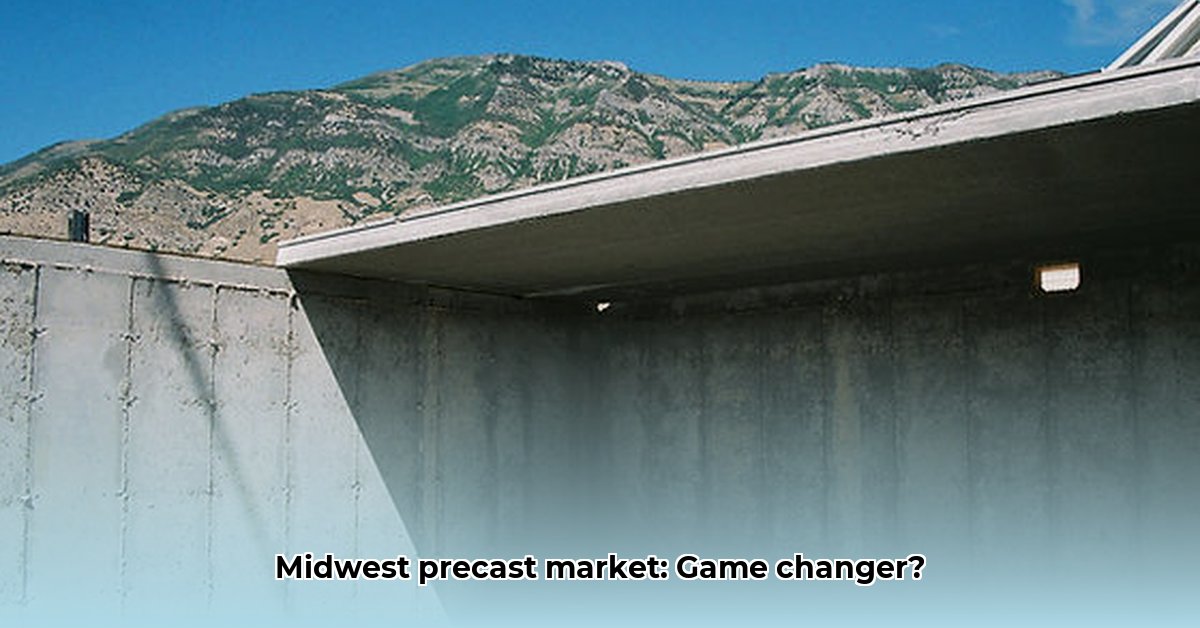
Spancrete: A Midwest Precast Power Play
The 2020 merger of Spancrete and Wells Concrete significantly reshaped the Midwest precast concrete market. This wasn't merely a business transaction; it was a strategic consolidation uniting two industry giants, creating the region's largest precast concrete producer. This union leveraged Wells Concrete's established market presence with Spancrete's pioneering hollow-core technology—a technology refined over decades, with origins tracing back to post-World War II Germany. But how has this merger impacted the industry, and what does the future hold?
Getting to Know the Players
Wells Concrete, a long-standing player in the Midwest, possessed a strong reputation and market share. The Spancrete acquisition augmented this established strength with a substantial injection of innovative technology. Spancrete, renowned for its advancements in hollow-core extrusion, brought specialized expertise and technological prowess to the table. This wasn't simply an amalgamation of companies; it was a strategic fusion of operational strength and technological innovation.
The Midwest Market: A New Power Balance
This merger immediately altered the market's competitive landscape. Existing companies now faced a significantly larger, more formidable competitor. The impact was immediate and undeniable. But what are the long-term effects? Will the merger lead to price increases or spur further innovation? The answers remain pivotal questions. However, one undeniable outcome is a significant increase in the Midwest's overall precast concrete production capacity.
The Merger: Advantages and Challenges
The merger presented compelling advantages and inherent challenges. Economies of scale promise substantial cost reductions. The expanded market reach unlocks numerous opportunities. However, integrating two large organizations with distinct cultures presents significant hurdles. Redundancies were anticipated, potentially leading to job losses in certain areas. Harmonizing diverse operational systems requires careful planning and execution. How will these challenges be addressed?
Here's an analysis of the impact on various stakeholders:
| Stakeholder | Short-Term Impact | Long-Term Impact |
|---|---|---|
| Wells Concrete | Increased efficiency; higher sales; broader product portfolio | Increased market share; expanded reach; new product development opportunities |
| Spancrete Employees | Adjustment period; training on new systems; potential restructuring | New career growth opportunities; broader responsibilities; larger team collaboration |
| Midwest Construction Firms | Increased material availability; diverse product selection | Potential pricing adjustments; shifts in service offerings |
| Competitors | Intensified competition; need for differentiation | Increased pressure to innovate; potential further market consolidation |
Assessing the Risks: What Could Go Wrong?
The merger's success hinges on effective risk management. Integrating two distinct organizations is inherently complex. Retaining Spancrete's highly skilled workforce, particularly those with specialized knowledge, is crucial. Economic downturns, always a possibility, could significantly impact the merged entity's performance. Finally, adapting to technological advancements and maintaining innovation within the dynamic precast concrete industry is paramount. Will they successfully navigate these risks?
| Risk Factor | Likelihood | Impact | Mitigation Strategy |
|---|---|---|---|
| Integration difficulties | Moderately Likely | High | Phased integration; meticulous planning; comprehensive employee training |
| Key Personnel Loss | Unlikely | Medium | Competitive compensation; robust career development opportunities |
| Economic Downturn | Possible | High | Diversified product lines; expansion into new markets |
| Technological Obsolescence | Moderately Likely | Medium | Ongoing R&D embracing innovative technologies |
| Regulatory Changes | Unlikely | Medium | Close monitoring of regulatory changes; proactive compliance adjustments |
The Long View: Looking Ahead
The long-term success of this merger depends on several factors. Continuous precast technological advancements are vital for maintaining a competitive edge. Expansion into new markets is a likely strategic initiative. Sustainability initiatives—utilizing environmentally friendly materials and practices—are becoming increasingly important for attracting environmentally conscious clients. The Wells-Spancrete merger fundamentally reshaped the Midwest precast concrete market; its future trajectory depends on the effective utilization of combined strengths to navigate challenges and seize opportunities.
Three Pivotal Points:
- The acquisition created the largest precast concrete company in the Midwest, significantly altering the market's competitive dynamics.
- Integrating Spancrete's innovative hollow-core technology into Wells Concrete’s existing operations presents both significant opportunities and challenges.
- Long-term success hinges on navigating integration complexities, embracing innovation, and addressing sustainability concerns.